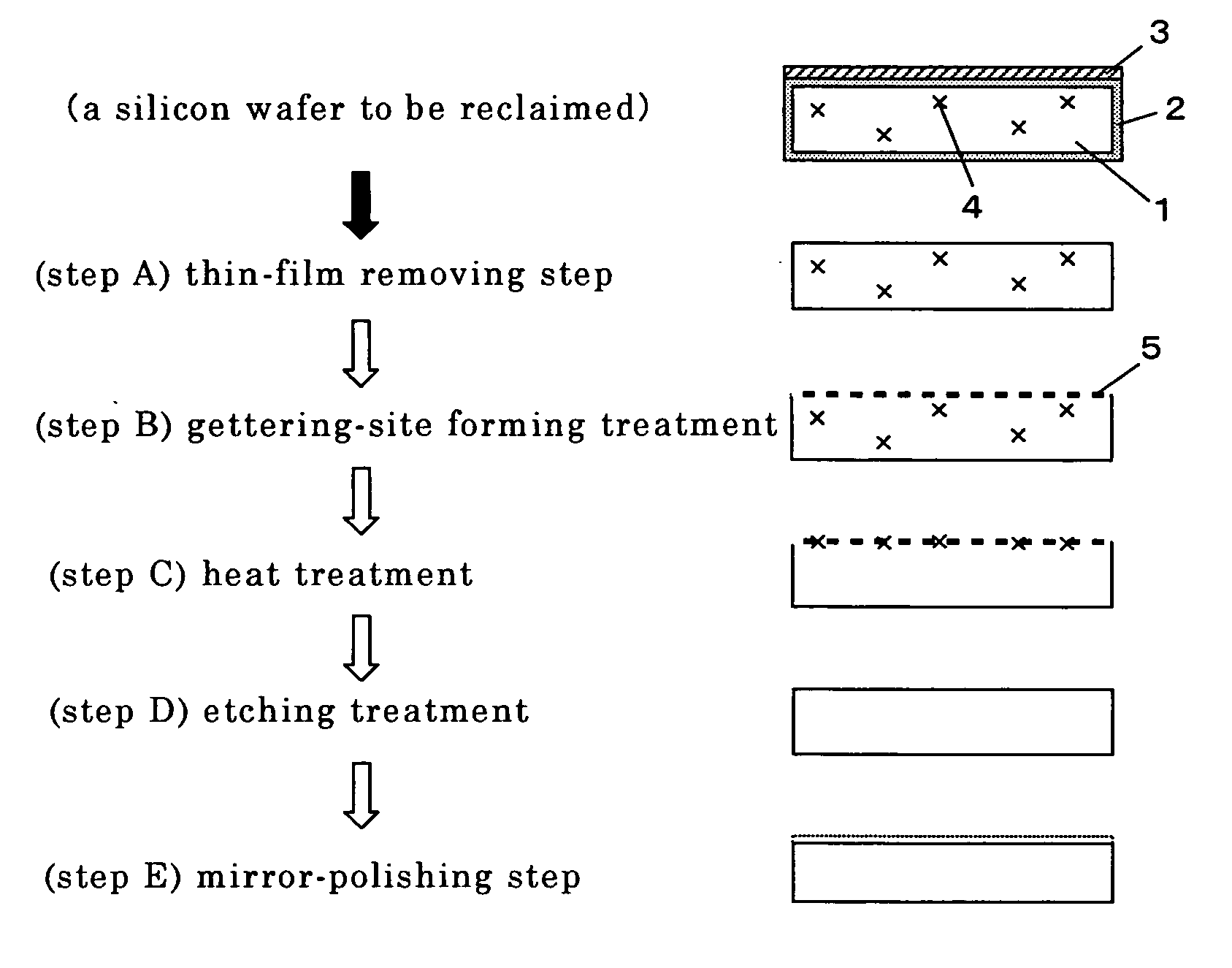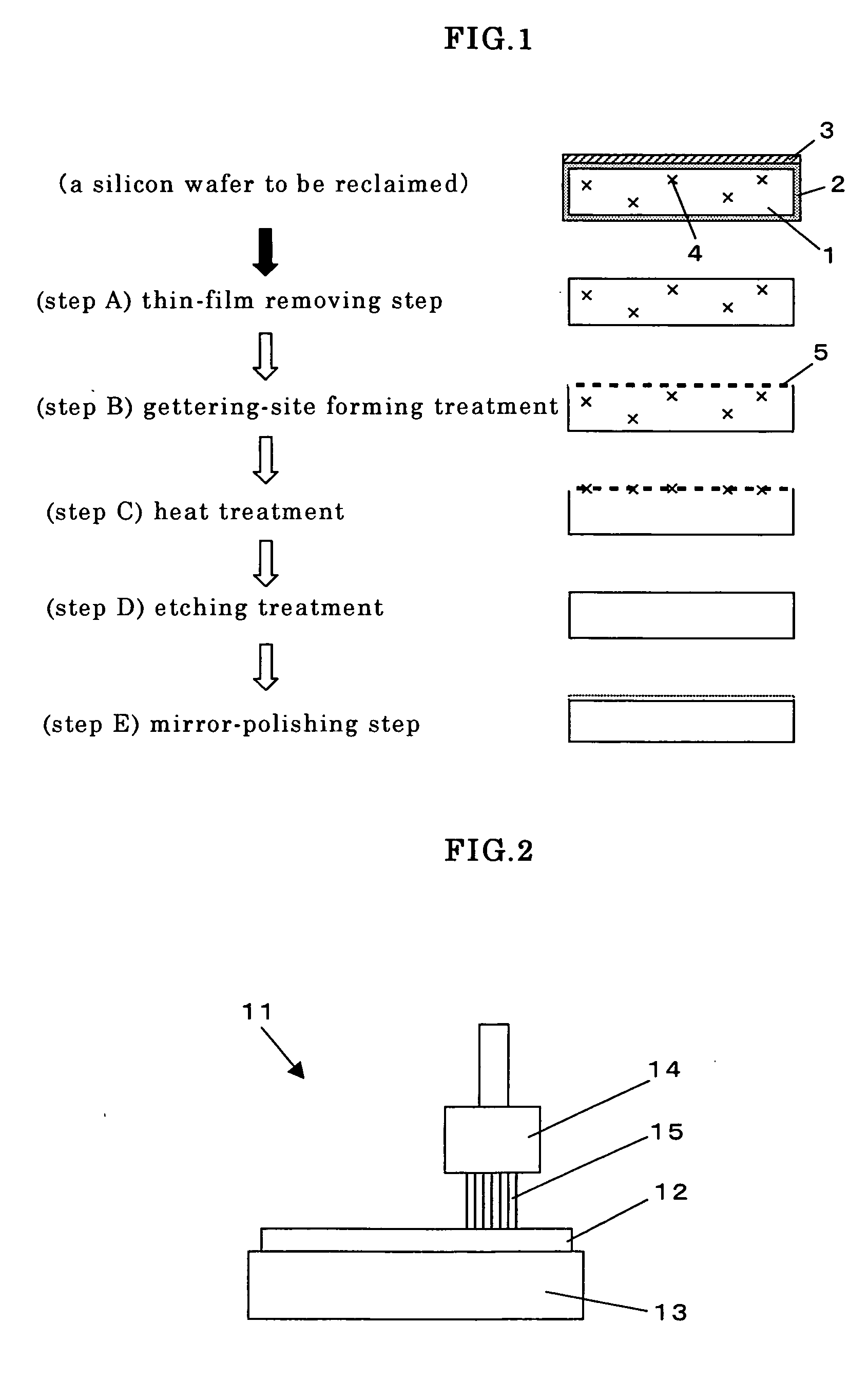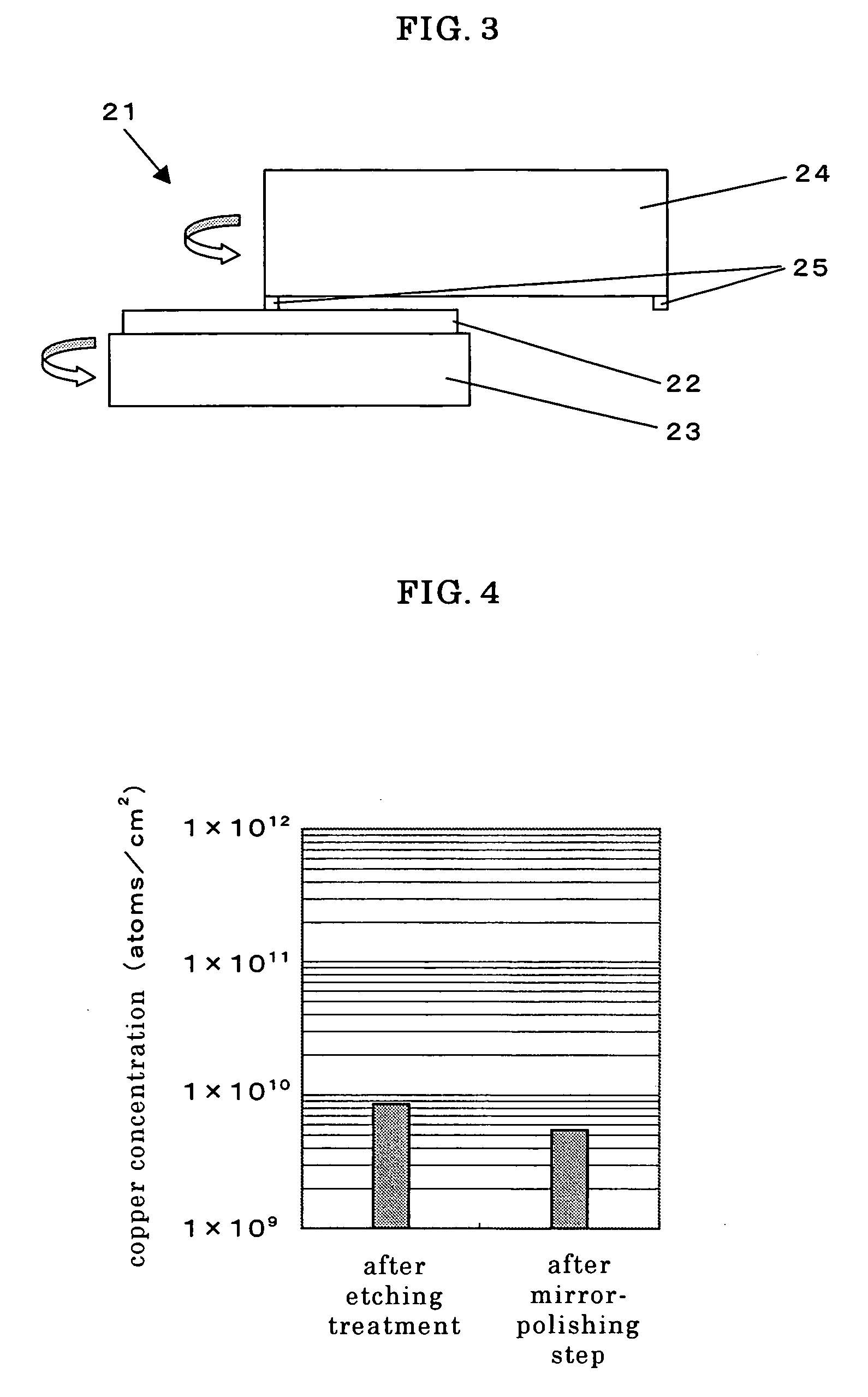Silicon wafer reclamation method and reclaimed wafer
a technology of silicon wafers and reclamation methods, applied in the direction of decorative surface effects, electrical appliances, decorative arts, etc., can solve the problems of contaminated copper, other products are also contaminated with copper, and copper cannot be removed, so as to achieve stably the effect of little metal contamination
- Summary
- Abstract
- Description
- Claims
- Application Information
AI Technical Summary
Benefits of technology
Problems solved by technology
Method used
Image
Examples
experiment 1
(Experiment 1)
[0048] First, four silicon wafers with a 300-mm diameter were prepared. And, after immersing these silicon wafers in a mixed solution of sulfuric acid and hydrogen peroxide having a 1000-ppm copper concentration, the wafers were heated at 700° C. for 1 hour. Thereby, silicon wafers that were purposely contaminated with copper inside the wafers were prepared.
[0049] First, a wafer among the silicon wafers purposely contaminated with copper was subjected to sandblasting using the blast apparatus 11 as shown in FIG. 2 and thereby gettering sites were formed in the wafer surface. At this time, alumina grains with an average grain diameter of about 5 μm were used as a polishing agent. Next, the silicon wafer subjected to the gettering-site forming treatment was subjected to heat treatment by heating the wafer up to 650° C. and holding it for 1 hour and then cooling it down at a cooling rate of 4° C. / min. Then, the surface of the silicon wafer was etched and removed by 10 μm...
experiment 2
(Experiment 2)
[0050] Next, another silicon wafer purposely contaminated with copper as described above was subjected to surface-grinding using the surface-grinding apparatus 21 as shown in FIG. 3 and thereby gettering sites were formed in the wafer surface. At this time, as a grind stone, diamond grains in which those with grain diameters of about 2-6 μm having been fixed with resin were used. Then, after subjecting the silicon wafer to heat treatment and etching treatment as performed in the above-described Experiment 1, the copper concentration of the obtained silicon wafer was measured with the same method as above. As a result, it was found that the copper concentration of the wafer was 1.22×1010 atoms / cm2.
experiment 3
(Experiment 3)
[0051] For the comparison, another silicon wafer purposely contaminated with copper as described above was only etched by 10 μm with 48% NaOH, and the copper concentration of the obtained silicon wafer was measured by the same method to above. As a result, it was found that the copper concentration of the wafer was 2.01×1012 atoms / cm2. Furthermore, the other silicon wafer purposely contaminated with copper as prepared above was subjected to heat treatment at 650° C. for 1 hour, etched by 10 μm with 48% NaOH, and the copper concentration of the obtained silicon wafer was measured by the same method as above. As a result, it was found that the copper concentration of the wafer was 1.25×1012 atoms / cm2.
[0052] From the results of the Experiments 1-3, it can be confirmed that impurities inside a silicon wafer can be drastically reduced by subjecting the wafer to the gettering-site forming treatment and the heat treatment.
[0053] As described above, by a reclaiming method of...
PUM
| Property | Measurement | Unit |
|---|---|---|
| temperature | aaaaa | aaaaa |
| diameter | aaaaa | aaaaa |
| grain diameters | aaaaa | aaaaa |
Abstract
Description
Claims
Application Information
 Login to View More
Login to View More - R&D
- Intellectual Property
- Life Sciences
- Materials
- Tech Scout
- Unparalleled Data Quality
- Higher Quality Content
- 60% Fewer Hallucinations
Browse by: Latest US Patents, China's latest patents, Technical Efficacy Thesaurus, Application Domain, Technology Topic, Popular Technical Reports.
© 2025 PatSnap. All rights reserved.Legal|Privacy policy|Modern Slavery Act Transparency Statement|Sitemap|About US| Contact US: help@patsnap.com



